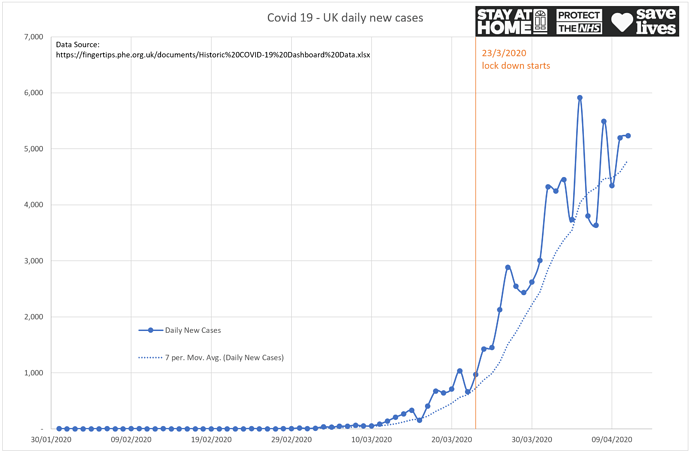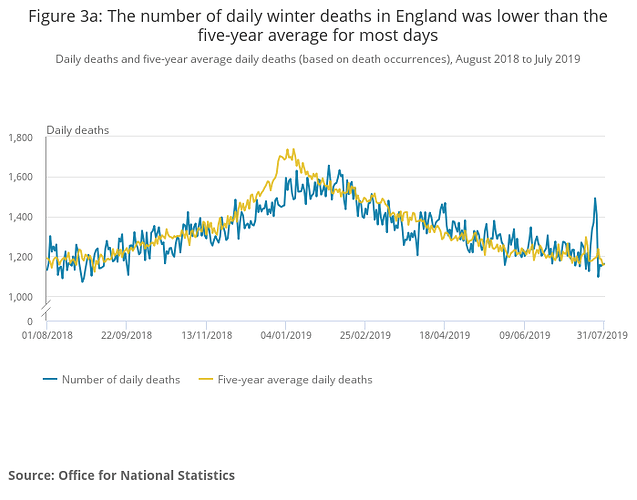I’ve been watching the graphs Public Health England publishes for a while e.g. ArcGIS Dashboards Classic
However I don’t think they are the best visualisation of the data, so like lots of other people, I’ve made one of my own. Particularly I think there was a bit of a 7-day pattern in the early data, having less new cases reported over the weekends for some reason (less testing, or lab capacity?), so I added a 7-day average moving trend line (dotted), and also labelled up when lock-down started.
This is just the new daily cases plotted, which at ~5k per day it a lot, but I think at this point it’s starting to look like the rate of increase has substantially slowed and is maybe levelling off:
Clearly still a long way to go, and I guess we need to see the infection rate falling, but at least perhaps things are starting to stop getting worse.
Fingers crossed everyone, stay safe!





